GAZ Volga cars - Factory history

GAZ
Although the Russian auto industry has existed since the inception of the automobile, it is difficult to say that it has attracted particular attention.
After World War II, the Soviets slowly began to change their car industry. The first in a series of successful cars was the GAZ-M20 Victory, a likable design that was one of the first brand new cars in the world after the end of the war. Pobeda appeared on sale in 1946, and in addition to the domestic market, it was successfully exported abroad. However, the car industry was advancing so fast in those years that Pobeda was an obsolete car by the early 1950s. After Stalin's death in 1953, new leader Nikita Khrushchev ordered GAZ engineers to build him a modern car that the average family could afford, without lagging behind what American leaders offered. Designer Alexander Nevzorov began work in November 1953, and GAZ bought it Chevrolet BelAir, Ford Customline and Plymouth Savoy as inspiration. Although the idea was that the car had a typical Russian design, the final lines were very much like Ford.
The first prototype was completed the following year with a 2.4L I4 engine from Pobeda developing 65hp, and the choice of gearbox was manual and automatic, each at three speeds.
The model's name fell on the Volga, and as the first serious test, GAZ sent three prototypes to serious off-road tests as well as endurance tests. The reporters were delighted and came to the conclusion that the Volga is a much better car than Victory. While Khrushchev bragged about how Volga came from idea to serial model in just two years, the reality was completely different. During 1956, the first year of the Volga on the market, only five copies were produced, three of them at the end of October. By American standards, the Volga was a small car, 4.83 meters long, but by European standards it was a mid-range car and could comfortably accommodate six adults. Modeled on American cars, the Volga had a clock on electricity, a radio, and taillights and flashing lights were all in one. Perhaps the most recognizable part of the Volga, however, was the deer logo on the hood, and the customer was given a choice of two front seats and a bench. The most interesting part was certainly the grill, commissioned by General Zhukov, a World War II hero and one of Stalin's key men. During its time, the Volga was also an aerodynamic model (0.42). Production began in large numbers in 1957, and the price of 5400 rubles was not too high. However, the aftermath of the war was still felt in Europe, so the first buyers were mostly the secret police and government. The first models, known as the Series 1, had a brand new 2.4 L engine that developed 70 hp and also for the first time a Russian car had an automatic transmission. However, the automatic transmission has remained in the market for only a year since most people opted for a manual transmission, for ease of maintenance.
The first series of cars were divided into M21 (automatic), M21V (manual transmission) and M21A (taxi), while the models intended for export were marked with M21D (automatic) and M21E (manual). Both export models had a 2.4 L engine, but with 80 hp thanks to slightly higher compression. The first batch survived production until 1959, when Series 2 arrived with a new vertical grill, which could be obtained in car or chrome color. The bumpers were also replaced with new ones, but the biggest advantage was the addition of an M21H model that had the steering wheel on the right. Exports began extensively, with the Volga particularly well received in Belgium, where it was nicknamed the "Tank on Wheels". In the same year, Volga begins to compete in motorsport with a victory in the Thousand Lakes Rally in Finland and a third place in the Greek Rally. Already then Volga gets a high reputation. Many people liked the fact that the Volga was quite lifted off the ground, but the main feature was how easy the car was to make and easy to maintain. There were even rumors that GAZ could export the Volga to America, but it never happened. The third series was introduced in 1962 and lasted until 1970. The biggest change was under the hood where, in addition to the standard I4 engine, a 5.5 L V8 engine was now offered that developed 160 hp. However, this engine was intended only for politicians and the KGB, and with the M23 mark, only 603 copies were made in the first nine years of production. Other changes were mainly grilled, as was the increase in power from I4 engines to 75 hp (domestic market) and 85 hp (export). The same year, Yuri Gagarin received a Volga as a gift, which GAZ wanted to symbolize two Russian icons.
GAZ also offered the Volga station wagon for the first time in 1963, which had a maximum payload of 400 kg, and this version was very popular in the ambulance. Somewhat later, GAZ experimented with the out-of-version version as well as the 4 × 4 model, but none of them entered series production. During 1963, diesel also became an option on export models, and the choice of diesel engine was reduced to 1.6 L with 43 hp (Perkins), 2.0 L with 68 hp (Peugeot) and 2.2 L with 65 hp (Rover). Perkins diesel was the first to be offered while the other two arrived a little later. During the first 15 years of production, GAZ produced 638875 Volga, of which the best year was 1968, when 59680 units were sold.
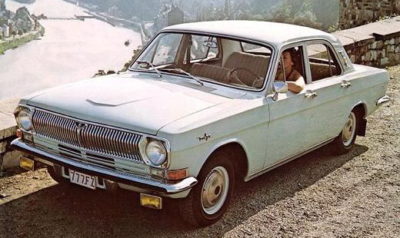
As much as the first generation of the Volga was a popular car, yet the second generation changed the way people viewed Russian cars. For the Russians, the GAZ-24 Volga became a symbol and for a long time represented the best-selling Russian car in export, so it was not a rare specimen in other European countries. While the M21 Volga was still a design copy of the American 1955 Ford, the M24 was a special Russian car in every respect. The M24 had all the characteristics that made it glorious, as it is powerful, great for all roads, and with regular maintenance it could last forever. It was also bigger, more comfortable and harder to buy compared to its predecessor. The development of the M24 began in the early 1960s, but the first prototype was not ready until 1967. The lines were clean with minimal chrome, and although the prototypes had four headlights, when the serial model was introduced, that number dropped to two. The prototype also had a 3.0L V6 125hp engine, but the standard models had the already famous 2.4L I4 engine, now 95hp. The taxi versions had the same engine but with 80 hp and could go for cheaper fuel.
Throughout its long history, GAZ has persistently tried to offer a six-cylinder engine, and many different engines from BMW, Peugeot, Volvo and Ford have been tested. However, none of them went beyond the prototype stages. Much more impressive was the 2.1 L diesel engine (62 hp), which was introduced in Volga, Belgium, and was intended for foreign markets only. The only gearbox as an option was a brand new four-speed manual. Thanks to friendly relations with communist states such as Cuba and China, about 75000 second-generation Volgae were exported to these two countries. In 1972, a wagon was also on offer, and very few convertibles were made for special occasions when politicians rode during the parades.
The GAZ-24 95 was a special four-wheel drive model made for politician Leonid Brezhnev, and GAZ made a few more specimens on special orders. The big news for 1973 was the return of the 8-liter V5.5 engine, which developed 190 hp and, as in the past, was still made specifically for the KGB. These models had a three-speed automatic transmission, and the only way to recognize them was through a double exhaust as well as a long antenna. It is speculated that the top speed was 179 km / h, but this information was never confirmed. The second-generation Volga has survived on the market for 18 years without major changes, and the biggest change was seen in 1977 when the complete interior was redesigned to meet the new standards for safety measures. One of the rarest models is the GAZ 24-56, which was only manufactured in 1978 with the steering wheel on the right and the Peuget diesel engine. Unlike other diesel engines in the Volga that were only installed in Belgium, these models were made in Russia with the aim of exporting to countries such as Singapore, India and Pakistan. Less than 1000 copies are believed to have been made. As we mentioned, the second-generation Volga became a status symbol in Russia, but unlike its predecessor, it was no longer the ideal car for the average Russian buyer. Namely, over the years, Lada and Moskvich have introduced cheaper models that provided more for their price, so GAZ concentrated on producing models for state needs. Most potential buyers were not even able to buy the new Volga, but only used models from 100000 -150000 km.
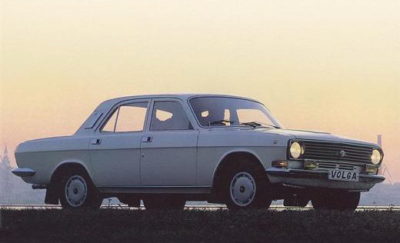
As early as the late 1970s, it became clear that the Volga needed change, but it did not happen for early reasons, primarily financial ones. By the early 1980s, GAZ still got into the job and introduced the third generation in 1982. Although a new model was expected, the 1982 Volga was largely based on its predecessor with a new front and rear to deceive customers that it was still a newer model in the question. While developing, GAZ had planned to use the new 3.0 L V6 engine as standard, but it did not come about because of the oil crisis in the early 1980s, which is why the base engine was still tested with a 2.4hp 4L I105 and a little later in it also offered a 2.6 L with 140 hp. During the first two years, only the KGB and the government were able to get the Volga to finally start production in 1984, but most of those who had money for the Volga had to wait for the USSR to break up before the Volga became available to everyone. Specifically for the KGB, GAZ offered two V8 engines, 4.2L with 160hp and 5.5L with 220hp. An interesting thing about these models is that half of the cylinders were extinguished during regular driving, and later they were ignited as needed. In 1987, it also offered Mercedes diesel, 2.6L with 166bhp. Like its predecessor, the GAZ-3102 Volga was driven mostly by politicians and the government, and after the collapse of the Soviet Union was sold to private owners. However, due to high consumption (exceeding 20 liters) and outdated design, this model did not bring the sales that the government hoped for.
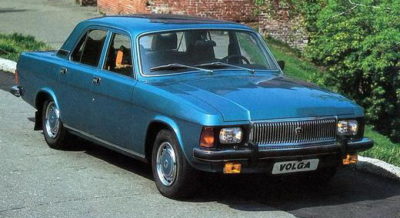
By the early 1990s, it became clear that the Volga had lost its place in the market. The planned replacement, the GAZ-3105, was shut down after only 55 copies produced, so GAZ decided to give Volga another chance. By 1992, the new model was ready, now known as GAZ-31029, but by then GAZ had lost many loyal government customers who maintained the company in the past. For this reason, probably no one was surprised that the V8 engine had disappeared from the offer so the buyer could now only get a proven 2.4L engine. Although the new model had a solid start, its reputation for poor quality and rust as well as strong competition made its mark. The GAZ-31029 survived the production of at least all of its predecessors, only six years, but a solid 115 copies were made during that period.
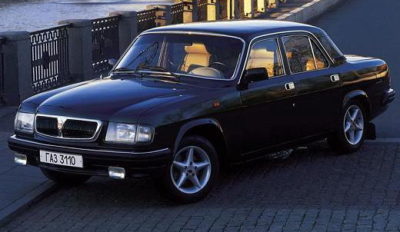
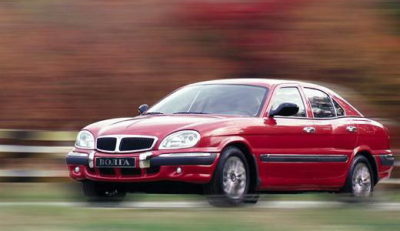
With no funding to develop a brand new model, GAZ in 1997 upgraded an already existing model, now known as the GAZ-3110. Although the design was based on its predecessor, all the parts except the door were brand new, and after a long period it was seen lame. The choice of engines remained the same, but diesel engines have now been developed and built in Russia. Minimal design changes followed in 2000 with many classic lines and more modern standard equipment such as ABS, power steering and automatic transmission. The planned V6 and V8 engines never saw the light of day, so the only engine was 2.3 L. GAZ also had big plans for mass production, but when 342 units were sold in 2001 and only 20 units the following year, it was clear that the days Volga counted. Even those who could afford this car still opted for some of the popular imported models, such as the Mercedes E Class and the BMW 5 Series.
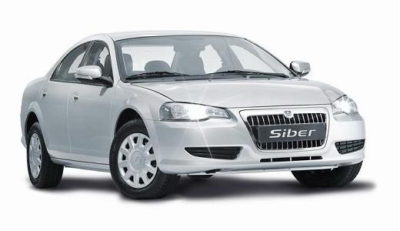
The latest new Volga was launched in 2004 with a Chrysler 2.4L engine, and three years later, it also featured a 2.4 L diesel engine, also from Chrysler. The latest model under the original Volga design was manufactured in 2007 after GAZ announced that it would concentrate on a line of trucks and buses that generate much higher profits. In 2008, GAZ, in collaboration with Chrysler, introduced the Volga Siber, which is actually a previous-generation Chrysler Sebring with minimal design changes.
Author: Talledega
Retrieved from: Brzabrzina.com
Recommendation of similar texts:

Hi there, I am Mladen and I am an auto enthusiast. I started this blog years ago to help like minded people share information about latest cars, car servicing ideas, used car info, exotic cars, and auto technology. You will find helpful articles and videos on a wide variety of cars - Audi, Mercedes, Toyota, Porsche, Volvo, BMW and much more. Ping us if you have anything cool to share on latest cars or on how to make older cars more efficient, or just want to say hi!






